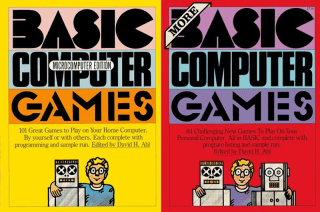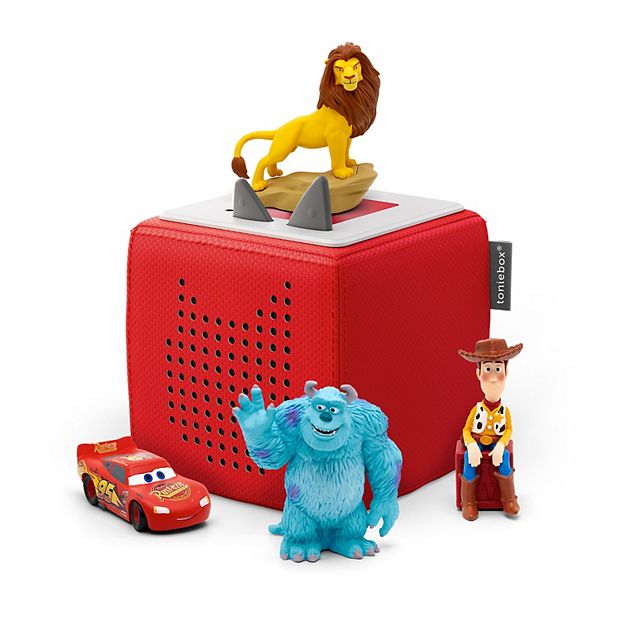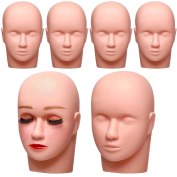I often wonder if kids still wonder and wonder what we can do about it?
– Gary Stager, Founder of Constructing Modern Knowledge
Each year, Constructing Modern Knowledge begins with a project conjuring ritual in which participants share project ideas. Then everyone considers the proposals, and set off to spend the next four days working towards that goal (or new ones that arise serendipitously or by necessity). As in all aspects of CMK, the faculty refrains from putting their thumb on the scale, shifting focus away from the participants, or creating any sense of coercion. One potential downside of this stance is that our faculty are a fount of creative ideas. In a perfect world, lasting longer than four days, the faculty could work on their own projects alongside or in collaboration with participants.











Inspiration for projects come from an infinite number of sources, including a problem in need of a solution, the curriculum, current fads, the news, student questions, emergent technology, available materials, tools, and interesting objects.
Thomas Edison, one of history’s great tinkerers, believed in having a seemingly infinite array of tools and materials on-hand in his West Orange, NJ laboratory so that he could achieve a goal to create at least one small invention every week and a large, society-changing one every six months. He liked to joke that his stockroom contained every conceivable material on hand from the hide of an elephant to the eyeballs of a U.S. senator!
Constructing Modern Knowledge lavishes educators with a mountain of tools, materials, technologies, supplies, and books to inspire and support project work. Materials can inspire wonder, solve a problem, provoke, or blossom into a creative relationship of knowledge construction.
A Cabinet of Wonders
In prior centuries, some of Europe’s most elite aristocrats, nobility, and royalty developed and maintained their own wunderkammer, a room or cabinet of wonder to display their collections of curiosities from around the world. These natural and man-made artifacts formed the earliest and most exclusive personal museums at a time when travel was restricted to all but the wealthiest people, who could also afford to send others on collecting expeditions.
The wunderkammer married the natural world to the man made technological age. The age of the wunderkammer coincided with the belief that any one “man” could aspire to know everything. [Learn more about this fascinating history here or here.]
As an experiment in preparation for Constructing Modern Knowledge 2023, we humbly share a CMK Faculty Wunderkammer. In this virtual “wonder space,” are some project ideas the faculty might pursue if they were to CMK participants. This exercise is intended to provide a window into the thinking of our resident tinkerers.
Please resist the temptation to substitute one of these (our) ideas for your own project. Of course, follow your muse. This is a metaphor, not a curriculum. Our emphasis is on action, not collecting. The following represents a small collection of project provocations suitable for Constructing Modern Knowledge or your classroom
The CMK Virtual Wunderkammer
| Mattel Football If you can’t program your own version of Madden Football, can you program a simpler game, like the classic Electronic Football by Mattel? Can such a game live in your hands or just on the computer screen? Watch this short video of the game being played. |  |
| Program Classic Computer Games Use Scratch, Snap!, or Lynx to program versions of the classic games featured in the first computer book ever to sell one million copies, David Ahl’s Basic Computer Games or More Basic Computer Games. |  |
| Create an Invisible Disco It is unclear whether the circle in this video automatically triggers dance music or not, but we could certainly make a portable automatic invisible discotheque | |
| Tonies This box reads stories or sings songs when a particular toy is placed on top. Surely, CMK participants can invent something even better. Check out the product’s web site. |  |
| Mannequin Heads What can you do with an extra head or two? |  |
| Download Over 10,000 Vintage Recipes and Cookbooks The Internet Archive which has been digitizing vintage recipes from American history. From the late 1700s to the early 1900s, the ongoing collection now includes over 10,000 cookbooks. Link |

|
| Gossiping Wall An array of microphones around a room that pick up snippets of voices and then turn those into prompts to send to a text-to-image AI. The resulting images get projected onto a screen prominently displayed in the room. |  |
| Desert Bus Can you program your own version of the legendary most boring video game ever? | |
| Poetry Generating Camera Using generative AI, identify what is in the photo and write poetry about it. Read This Camera Trades Pictures for AI Generated Poetry. | 
|
| Surely, the world needs a rotary dial cellphone! This engineer made one for herself – free from the “distractions” of smartphones. What sort of newfangled versions of old stuff can you cobble together? |  |
| And then…Machine An AI that listens to project ideas and then comes up with ways to extend the project further. |  |
| Gameboy Programming Design and program games in MakeCode Arcade for the supercool handheld low-cost game systems like the Meowbit. |  |
| Knowledge Navigator In 1987, Apple CEO John Sculley was laughed out of Silicon Valley for showing a prototype of the Knowledge Navigator. Who’s laughing now? Certainly not the CMK participants who might build one. | |
| W. E. B. Du Bois’s Data Portraits: Visualizing Black America It surely doesn’t take a genius educator to discover the myriad and interdisciplinary ways in which this spectacular historical document might inspire rich projects. Here is a collection of resources (including for teachers) from the Cooper Hewitt Museum’s recent exhibition. Smithsonian Magazine featured an article as well. |  Click above to purchase book |
| Tiny Cameras Think about cool ways to use the $11 tiny WiFi cameras I bought on a lark. Find something cool to do with those Dashcams I bought in Hong Kong and never used. |  |
| Tilt-a-Tune Use the Microbit accelerometer to work through an array that contains the notes to play a song. |  |
| Full Frod Story! Building a frog house for a Frod. A hilarious example of generative design. | |
| Suddenly Seymour A Large Language Model fine-tuned on the thoughts of Seymour Papert. We can gather as much of Seymour’s writings as we can, use Python and the OpenAI APIs to transcribe multimedia and video from The Daily Papert, and then feed all of that text to the ChatGPT API. Then we can have a ChatBot that can respond to questions as Seymour might. |  An extension could be to use some AI voice cloning software trained on audio of his speech, so that Suddenly Seymour has a voice. Another extension might be to use the Whisper API so that we can speak to Suddenly Seymour in natural language. (note: the photo is not of Seymour Papert) |
| Dodecahedron Infinity Mirror Tinkercad plans for a super cool 3D printing build. |  |
Also of interest
The Subtlety of Prompt Setting by Gary Stager
The Project Paradox by Gary Stager
3 Steps to Project-Based Learning by Gary Stager
Recommended Books
(please ignore the broken graphics, the links work fine)
This series of five gorgeous, imaginative, and practical books are worthy of inclusion in your library. Buy them all!
Loose Parts for Children with Diverse Abilities
A spectacular book by one of the world’s leading experts on the Reggio Emilia Approach
A Reggio Approach to learning with materials from nature
An important collection of essays about how our relationships with objects shape who we are and become
A provocative & important exploration of our relationships with modern technology
“The bible of the maker movement in schools” – now celebrating its 10th anniversary
A fantastic soup-to-nuts exploration of project-based learning, coding, and engineering with the BBC micro:bit
Learning-by-making with the heart of a scientist and the critical eye of an artist
Compels readers to examine the imaginative origins of both art and science.
“This is a beautifully illustrated book that will undoubtedly spark the curiosity in any kid who reads it.” –Boing Boing
Hidden treasures, dreams of universal knowledge, and exquisite beauty
Such were the cabinets of curiosities of the seventeenth century, the last period of history when man could aspire to know everything.
The legendary out-of-print book about magician Ricky Jay’s remarkable collection of human oddities.
Further inspiration from Thomas Edison
“An 1887 newspaper report confirms that the West Orange stock room contained “eight thousand kinds of chemicals, every kind of screw made, every size of needle, every kind of cord or wire, hair of humans, horses, hogs, cows, rabbits, goats, minx, camels, … silk in every texture, cocoons, various kinds of hoofs, sharks’ teeth, deer horns, tortoise shell, … cork, resin, varnish and oil, ostrich feathers, a peacock’s tail, jet, amber, rubber, all ores, [and] metals.”
Edison put such exotic substances to use with surprising regularity. His notebooks, for instance, show that in their quest to discover an effective lightbulb filament, he and his assistants experimented with no fewer than 3,000 separate materials, including platinum and Japanese bamboo, before finally settling on carbonized cotton thread. After much similar trial and error, Edison employed compressed rainforest nuts to make the needle used in some of his earliest phonograph models before ultimately choosing tungsten as the best material for the job.” Shulman, S. (1997, February 1, 1997). Unlocking the Legacies of the Edison Archives. MIT Technology Review.
More on the Fascinating History of Wunderkammer
What Is a Wunderkammer? Best Cabinets of Curiosities (2022)
A terrific exploration of the history of wunderkammer by DailyArt Magazine
The Pre-Modern Museum: What Is A Cabinet Of Curiosities?
The Cabinet of Curiosities was the predecessor of the modern museum and, as its name suggests, a true world of wonders.
From The Collector web site


